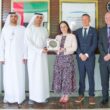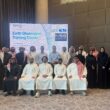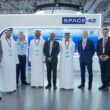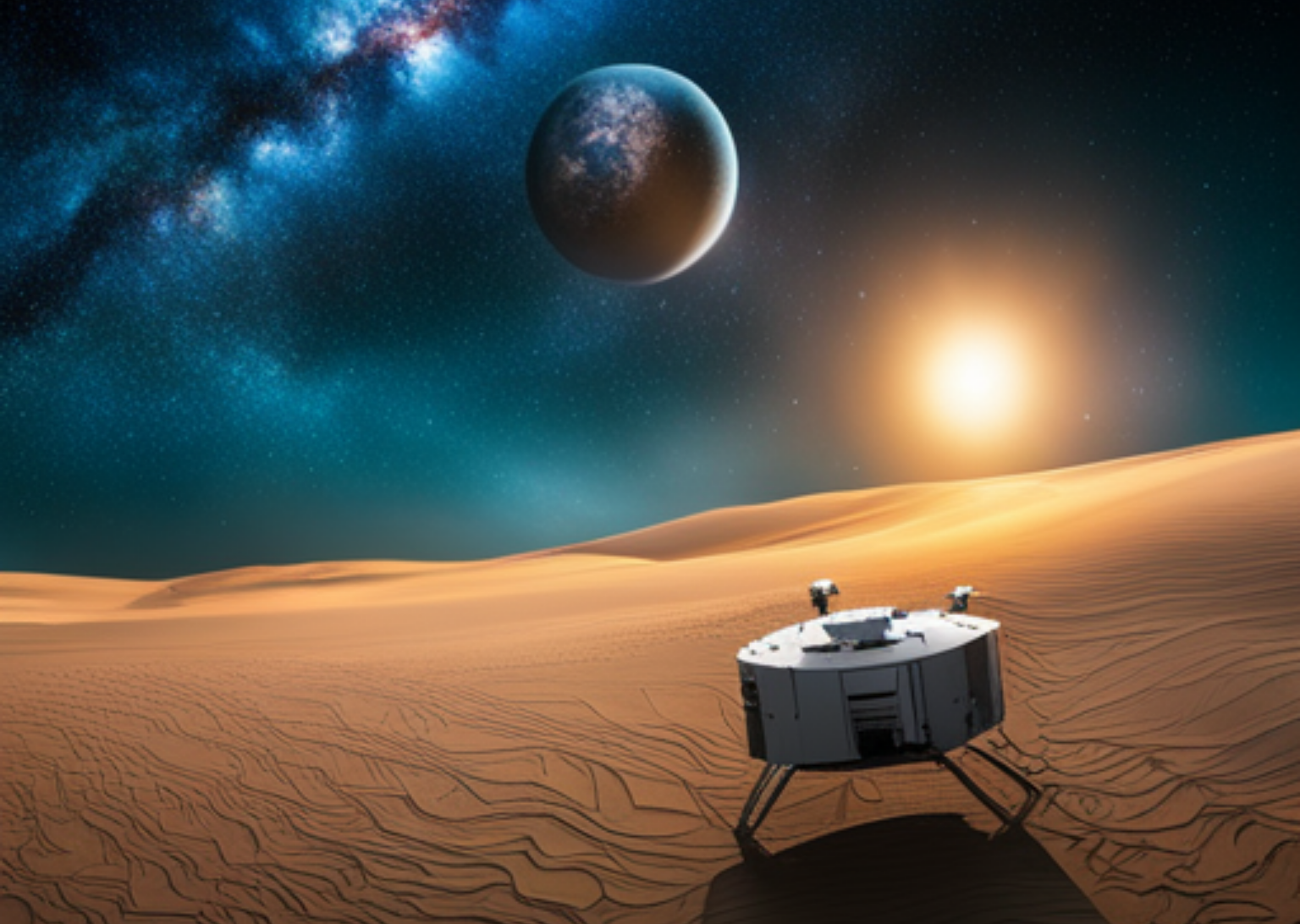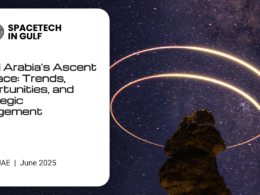
The momentum behind harnessing the Moon’s resources for exploration and habitation is gaining unprecedented traction, fueled by NASA’s Artemis Program and bolstered by the fervent efforts of private enterprises, research institutions, and global space agencies.
This fervor was palpably evident at the twenty-third assembly of the Space Resources Roundtable, held at the Colorado School of Mines last month. An impressive turnout of approximately 250 participants delved into discussions on intricate lunar economic models, the outcomes of simulated lab experiments, and the intricate legal and policy considerations inherent to lunar activities. As a testament to the surging enthusiasm, numerous pioneering companies shared their strategic blueprints for transforming the Moon into a thriving marketplace for innovative services and products.
The cornerstone that anchors the vision for future lunar utilization is in-situ resource utilization (ISRU). This strategic approach entails extracting critical resources like oxygen, water, and assorted materials, with the aim of generating rocket propellant and sustaining life-support systems. Moreover, the Moon’s untapped mineral reservoirs could revolutionize the production of lunar infrastructure, including living quarters, landing platforms, and various other essential structures.
Transitioning from Concept to Reality The transition from speculative aspirations to tangible advancements is being ardently felt. Angel Abbud-Madrid, director of the Center for Space Resources at the Colorado School of Mines, exclaims, “For years, these dreams have seemed like wishful thinking, but now they’re transforming into a concrete reality.” He underscores the growing international urgency and competition, which serve as formidable driving forces propelling the lunar agenda forward.
Abbuds-Madrid further highlights the substantial role of the private sector in actualizing lunar ambitions. He accentuates NASA’s collaboration with American entities through the Commercial Lunar Payload Services (CLPS) initiative, which aims to facilitate the delivery of cutting-edge scientific payloads and technologies to the lunar surface.
Conquering Unique Lunar Challenges Navigating the distinctive challenges posed by the lunar environment necessitates hands-on exploration. Abbud-Madrid emphasizes the paramount significance of direct engagement with the lunar landscape to unravel its intricacies, whether for resource extraction, construction, or scientific experimentation. Earth-based simulations fall short of capturing crucial factors such as electrostatic charges, radiation, the vacuum environment, dust, and the Moon’s distinct gravitational pull. Thus, concrete on-site interactions are vital for comprehending these challenges.
NASA’s Strategic ISRU Roadmap NASA’s meticulous planning extends to a comprehensive vision for ISRU. This entails outlining objectives, identifying critical knowledge gaps in lunar science, and advancing technologies that underpin the viability of ISRU. Simultaneously, NASA is devising strategies to engage industries and leverage expertise from sectors beyond aerospace.
Gerald Sanders, who heads NASA’s In-Space Resource Utilization Capability Leadership Team, presented an “Envisioned Future Priorities” roadmap at the Space Resources Roundtable. He highlights the initial focus on extracting the most accessible resources with minimal infrastructure requirements, ensuring their immediate local utilization. The emphasis rests on the lunar south pole region initially, with a future expansion to encompass diverse locations, specific minerals, refined products, and even deliveries to other celestial destinations.

Innovative Lunar Services Take Center Stage The growing landscape of lunar endeavors is warmly embraced by trailblazing companies like Intuitive Machines. This key player in NASA’s CLPS initiative aims to democratize lunar access for scientific exploration through its Nova-C lander. The maiden lunar voyage of this groundbreaking craft to the southern polar region is anticipated later this year. Notably, Intuitive Machines has engineered the Micro Nova, a propulsive drone tailored for localized lunar exploration. This innovative platform can reach sites beyond the reach of conventional rovers, facilitating rapid investigations of lunar craters, pits, and shadowed regions.
Unlocking the Lunar Potential of Water Ice Ben Bussey, Chief Scientist at Intuitive Machines, is a leading authority on the potential of water ice in permanently shadowed lunar craters – a focus area for NASA’s Artemis program. Bussey underscores the economic uncertainty surrounding the extraction of lunar water ice. The term “reserve” signifies not only the presence of a resource but also its economic viability, encompassing extraction, refinement, and profitable utilization.
Prior to embarking on full-fledged lunar water ice extraction, Bussey advocates for a demonstration akin to the Mars Oxygen In-Situ Resource Utilization Experiment (MOXIE). This technology, currently embedded within NASA’s Perseverance rover on Mars, converts Martian atmospheric carbon dioxide into oxygen. Bussey’s proposition involves conducting a parallel experiment on lunar water extraction to validate its feasibility.
Evolving Infrastructure for Lunar Pioneering The establishment of lunar infrastructure remains an overarching priority. Lunar polar regions, bathed in prolonged sunlight, offer an optimal environment for sustained exploration and development. Ben Bussey concurs that despite the challenges, the Moon presents a prime arena for laying the groundwork for future celestial endeavors.
Drawing parallels from his experiences in Antarctica, where the McMurdo Station facilitated scientific exploration, Bussey envisions establishing a lunar counterpart. Such a lunar infrastructure hub would empower in-depth scientific research and multifaceted exploration, catalyzing a new chapter in the expansion of human civilization beyond Earth. In his words, “Just as McMurdo serves as a gateway to exploration on Earth, we need a lunar McMurdo to lead our path into the broader solar system.”
A Swarm of Innovators: OffWorld’s Bold Pursuit
Among the vanguard of innovators driving lunar evolution is OffWorld, a trailblazing company that is challenging conventional paradigms and rewriting the narrative of human existence in the cosmos. OffWorld’s mission is underpinned by its formidable swarms of intelligent robots, which are poised to revolutionize industries encompassing mining, processing, manufacturing, and construction. The overarching vision revolves around deploying thousands of smart robots under human supervision, enriching small mining teams, and amplifying the productivity of larger operations.
OffWorld’s robots, uniquely engineered for harsh environments, embody the future of resource exploration. The company’s groundbreaking systems are poised to redefine space exploration by extending their proven capabilities to the final frontier. OffWorld envisions these robotic marvels as the linchpin for generating resources and constructing the off-world infrastructure that will propel the expansion of human civilization beyond Earth.
In a paradigm shift, OffWorld is championing the mantra of “BOTS BEFORE BOOTS,” heralding an era where robotic ingenuity will drive innovation and exploration. By introducing a fleet of robots empowered by a proprietary AI-driven platform, OffWorld is ushering in a new age of collaborative intelligence and collective behaviors across diverse industries.
OffWorld’s audacious mission encapsulates safer, more efficient, and environmentally conscious mining solutions. These solutions are poised to revolutionize mining operations by offering enhanced safety, effectiveness, and ecological responsibility. This innovative approach extends beyond Earth, with OffWorld poised to embark on a groundbreaking journey into space. With resolute determination, OffWorld’s robotics stands as the cornerstone for creating essential resources and pioneering the construction of vital off-world infrastructure – the foundation for accelerating the frontiers of human civilization into the cosmos.
As we stand on the cusp of a new era of lunar exploration, the combination of pioneering companies like OffWorld, strategic roadmaps by institutions like NASA, and the unwavering spirit of innovation is propelling us closer to unlocking the Moon’s potential and charting the course for humanity’s cosmic journey.”
